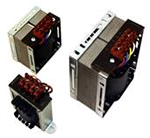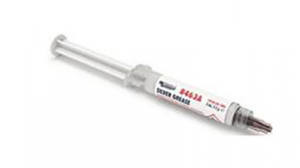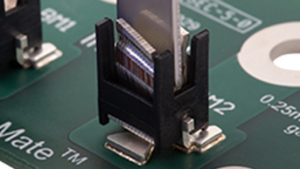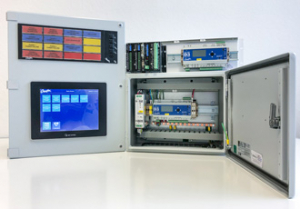The Power and the Glory
23rd June 2011
Source:
CEE Norm U.K Ltd

They may be conceptually simple, but transformer specification holds a few pitfalls for the unwary. James Mousley of CEE Norm looks at some of the specification considerations.
Ask 100 people for their list of the ten most important electrical inventions, and I’d wager you’d get a broadly similar list. Doubtless television would be in there. Probably the telephone and radio, too. The more component savvy might offer up the thermionic valve. How many, though, would put the transformer on their list. Most likely, even if they acknowledge the work of Michael Faraday and his experiments on induction between coils of the wire in the 1830s, the transformer itself will be a sad omission from the list of greats. And yet, without it, the world today would be a very different place.
The transformer has had some of the most profound impacts on society imaginable. Only with transformers has it become possible to transmit electrical energy over large distances efficiently, allowing communities to spread. Industry no longer needs to be centred around local power stations. Remote communities have access to grid-supplied high voltage electricity, stepped down locally by transformers – one of the key drivers to raising living standards country-wide. And today almost every electrical appliance will contain one or more transformers to match the input to the requirements of the load. How strange to ponder that so many of the changes in society and that so much of what we now take absolutely for granted are only possible because of a couple of coils of copper wire wound around a ferromagnetic core.
Transformers come in all shapes and sizes, and in variations that include power transformers, isolation transformers, audio transformers, current transformers, and more. And they are such a feature of modern life that you would expect that transformer specification would be an almost trivial matter. Yet there a many factors and considerations which, if not addressed at the outset of a design, may well cause problems for the unwary. So let’s look at some of the specification considerations.
The size of a transformer is decided by the product of the output voltage and the output current at full load, given by the formula VA = Secondary Voltage x Secondary Current. This very simple formula holds well for single tapped primaries and for closely tapped primaries – for example, transformers that operate for input voltages from 220-250V. However, if a transformer is tapped for multiple input voltages – say 120V and 240V – the VA rating increases by 15% as some of the winding space will not always be used but must be there. This can be overcome by arranging the primaries in series or parallel. If we have two 0-120V primaries, then we can connect in parallel for 120V operation and in series for 240V operation without any increase in VA rating.
Another consideration is regulation. When ordering a transformer, it is usual to quote the on-load RMS voltage. The off-load voltage will be higher than this, and is a function of the design and size of the transformer. A 3VA transformer has a typical regulation of 20%, while a 3kVA transformer would have an approximate regulation of 2%. The regulation is expressed by the formula:
Off-load voltage – full-load voltage divided by Off-load voltage x 100%
Regulation figures are approximates at best; remember that the output voltage will be higher if the transformer is not fully loaded. Bear this in mind when specifying a transformer. If the regulation is unacceptable, then a larger frame size will need to be chosen.
Think, too, about what the transformer will be used for. If it is a step down from a low voltage to a high voltage, for instance, where the gap between the two is quite large, then a conventional transformer will best suit the job. The conventional transformer is double wound: there is no physical connection between primary and secondary as they are two insulated coils. Suppose, though, only a small variation of voltage (either up or down) is required. An example might be when a European motor wound to run on 220V is required to operate on 240V.
If the motor has a nominal current of 10A, then for a conventional transformer we’d be looking at specifying a 2.4kVA product – a very big transformer. But an alternative is an autowound transformer. Although it doesn’t give isolation, it can be a very cost-effective option for small voltage variations.
The size of the autowound transformer is given by the expression:
(Highest voltage – Lowest voltage) x VA divided by Highest voltage = auto VA size
In this instance, that equates to:
(240 – 220) x 2400 divided by 240 = 200VA
So instead of paying for a 2.4kVA double wound transformer, a 200VA autowound transformer would serve the same purpose.
A further use for transformers is in rectifier circuits. Whenever a transformer is used to supply any load other than a purely resistive one, it is necessary to de-rate its RMS current rating to prevent overload. Further, when deciding the required RMS output voltage of a circuit using diode rectifiers, it is important to consider the off-load voltage which the smoothing capacitor in the circuit will cause to change to the peak, and not the RMS voltage. The peak voltage will be raised further by the regulation of the transformer in the off-load situation, and this must be taken into account when specifying the rectifying diodes. If it’s in excess of the rated diode voltage, then either the diode will be destroyed or there will be excessive heat dissipation.
Within its Transpower product range, CEE Norm has a complete suite of UK-manufactured transformers to meet all user requirements. The range covers both three- and single-phase transformers from 6VA up to 100kVA, isolating or double wound transformers, auto transformers and DC output transformers, complete with fusing as needed. In addition to the discrete components, CEE Norm can offer a wide range of enclosures to house transformers. CEE Norm also supplies transformer system solutions such as portable tool transformers, site master transformers, and 110V continuous rated transformers for site lighting and power tools, complete with panel sockets and circuit breakers as required.
Transformers come in all shapes and sizes, and in variations that include power transformers, isolation transformers, audio transformers, current transformers, and more. And they are such a feature of modern life that you would expect that transformer specification would be an almost trivial matter. Yet there a many factors and considerations which, if not addressed at the outset of a design, may well cause problems for the unwary. So let’s look at some of the specification considerations.
The size of a transformer is decided by the product of the output voltage and the output current at full load, given by the formula VA = Secondary Voltage x Secondary Current. This very simple formula holds well for single tapped primaries and for closely tapped primaries – for example, transformers that operate for input voltages from 220-250V. However, if a transformer is tapped for multiple input voltages – say 120V and 240V – the VA rating increases by 15% as some of the winding space will not always be used but must be there. This can be overcome by arranging the primaries in series or parallel. If we have two 0-120V primaries, then we can connect in parallel for 120V operation and in series for 240V operation without any increase in VA rating.
Another consideration is regulation. When ordering a transformer, it is usual to quote the on-load RMS voltage. The off-load voltage will be higher than this, and is a function of the design and size of the transformer. A 3VA transformer has a typical regulation of 20%, while a 3kVA transformer would have an approximate regulation of 2%. The regulation is expressed by the formula:
Off-load voltage – full-load voltage divided by Off-load voltage x 100%
Regulation figures are approximates at best; remember that the output voltage will be higher if the transformer is not fully loaded. Bear this in mind when specifying a transformer. If the regulation is unacceptable, then a larger frame size will need to be chosen.
Think, too, about what the transformer will be used for. If it is a step down from a low voltage to a high voltage, for instance, where the gap between the two is quite large, then a conventional transformer will best suit the job. The conventional transformer is double wound: there is no physical connection between primary and secondary as they are two insulated coils. Suppose, though, only a small variation of voltage (either up or down) is required. An example might be when a European motor wound to run on 220V is required to operate on 240V.
If the motor has a nominal current of 10A, then for a conventional transformer we’d be looking at specifying a 2.4kVA product – a very big transformer. But an alternative is an autowound transformer. Although it doesn’t give isolation, it can be a very cost-effective option for small voltage variations.
The size of the autowound transformer is given by the expression:
(Highest voltage – Lowest voltage) x VA divided by Highest voltage = auto VA size
In this instance, that equates to:
(240 – 220) x 2400 divided by 240 = 200VA
So instead of paying for a 2.4kVA double wound transformer, a 200VA autowound transformer would serve the same purpose.
A further use for transformers is in rectifier circuits. Whenever a transformer is used to supply any load other than a purely resistive one, it is necessary to de-rate its RMS current rating to prevent overload. Further, when deciding the required RMS output voltage of a circuit using diode rectifiers, it is important to consider the off-load voltage which the smoothing capacitor in the circuit will cause to change to the peak, and not the RMS voltage. The peak voltage will be raised further by the regulation of the transformer in the off-load situation, and this must be taken into account when specifying the rectifying diodes. If it’s in excess of the rated diode voltage, then either the diode will be destroyed or there will be excessive heat dissipation.
Within its Transpower product range, CEE Norm has a complete suite of UK-manufactured transformers to meet all user requirements. The range covers both three- and single-phase transformers from 6VA up to 100kVA, isolating or double wound transformers, auto transformers and DC output transformers, complete with fusing as needed. In addition to the discrete components, CEE Norm can offer a wide range of enclosures to house transformers. CEE Norm also supplies transformer system solutions such as portable tool transformers, site master transformers, and 110V continuous rated transformers for site lighting and power tools, complete with panel sockets and circuit breakers as required.
Similar articles
More from CEE Norm U.K Ltd
- Top Boxes for Scotland's Premier Water Project 21st December 2011
- Enclosures DNV approved for marine and offshore applications 17th November 2011
- Type tested, modular junction boxes and distribution boards key to reliable, cost-effective solar power installation 1st November 2011
- Junction boxes assure functional integrity in the event of fire 24th October 2011
Product Centre Updates
2024 World Battery & Energy Storage Industry Expo (WBE)
8th August 2024
China 1st and 2nd Floor, Area A, China Import and Export Fair Complex












Write a comment
No comments